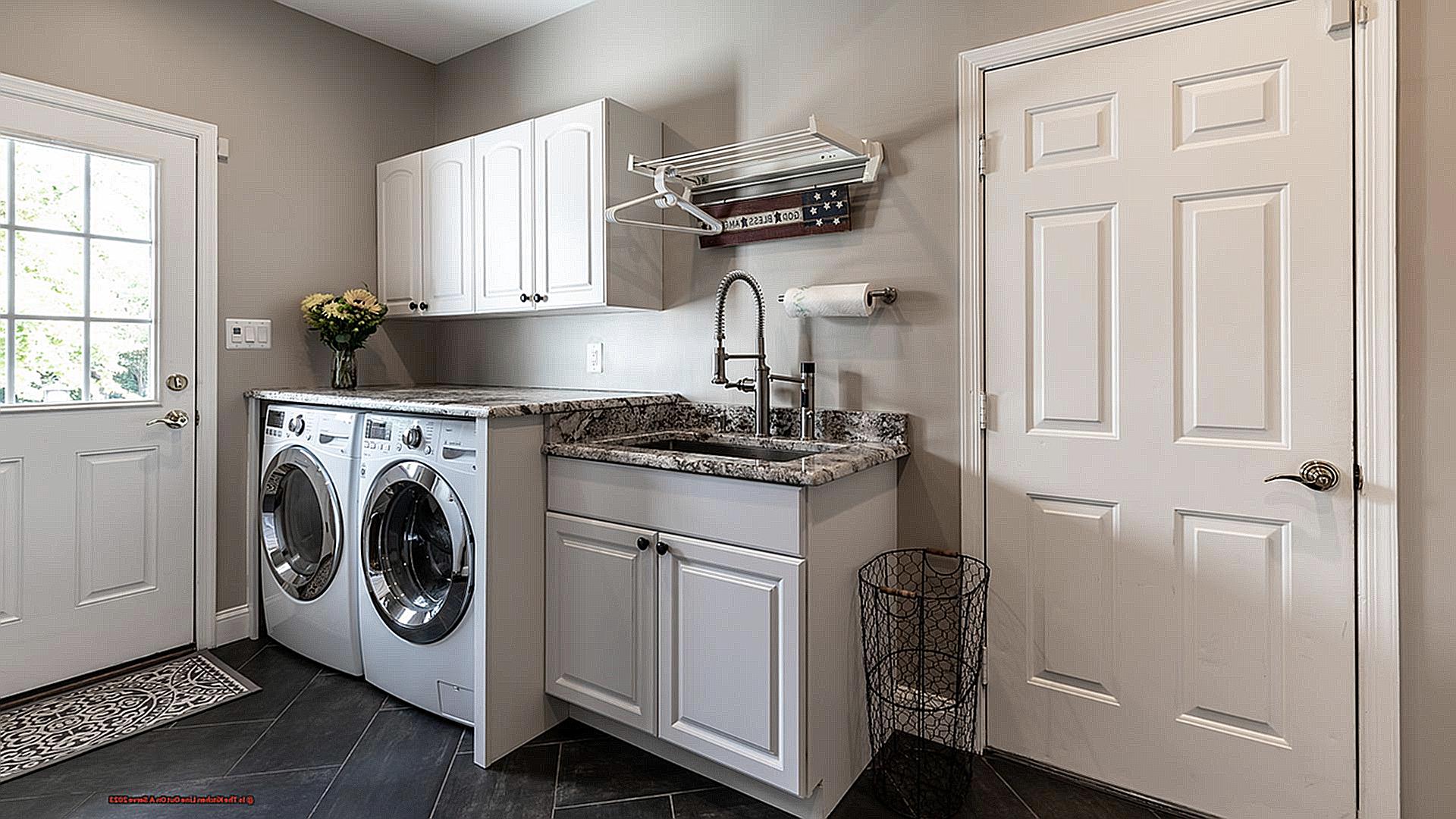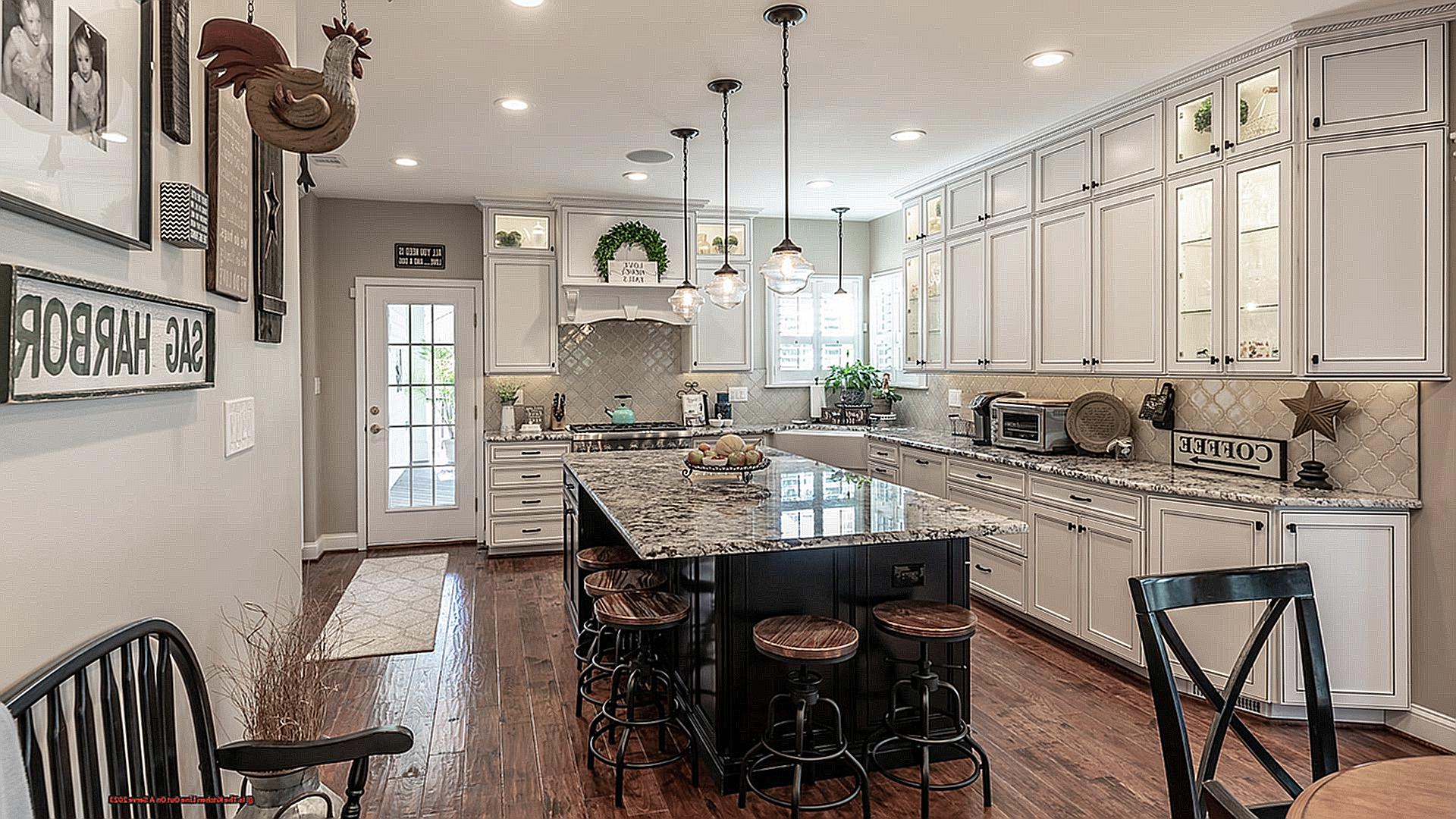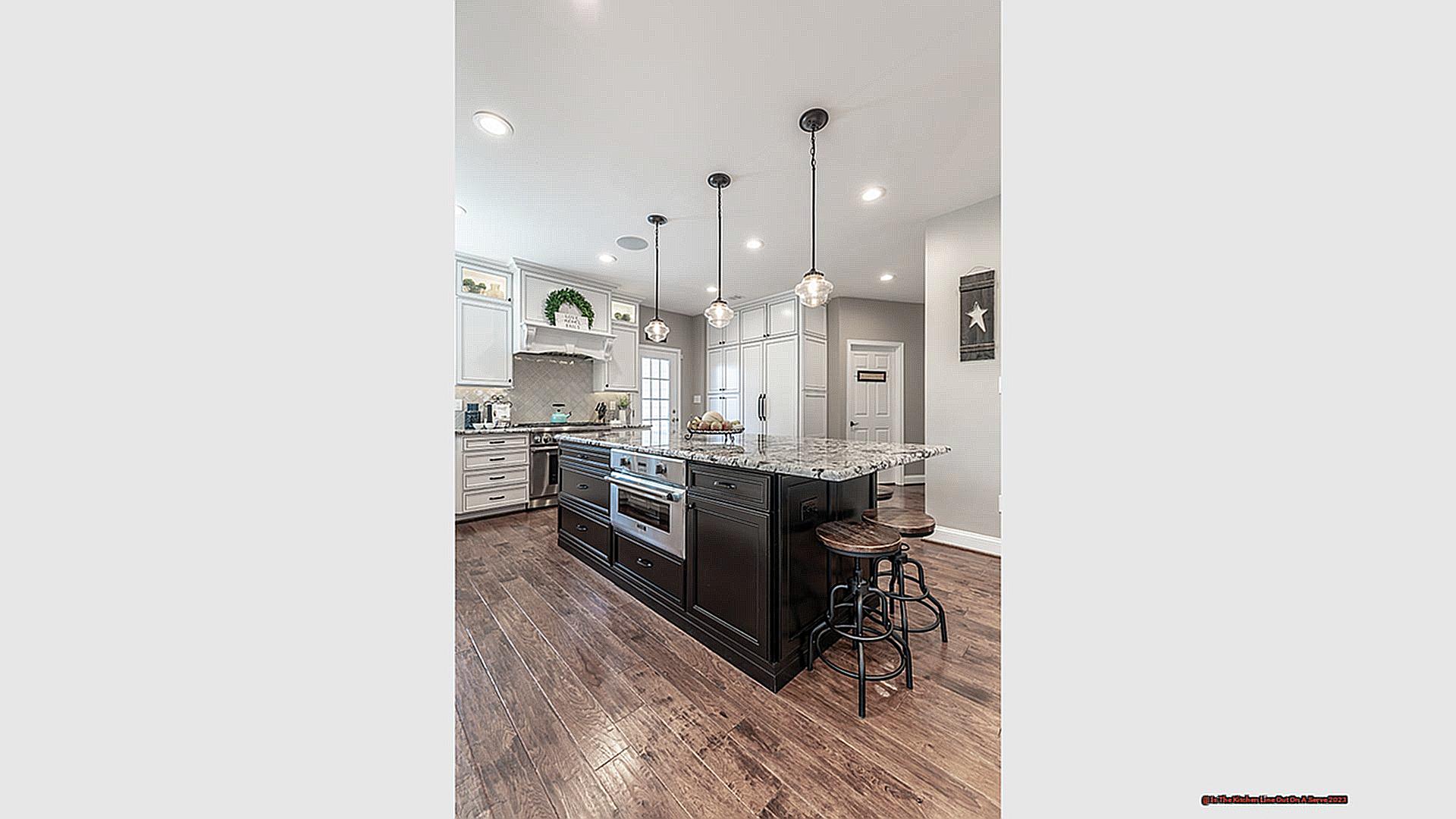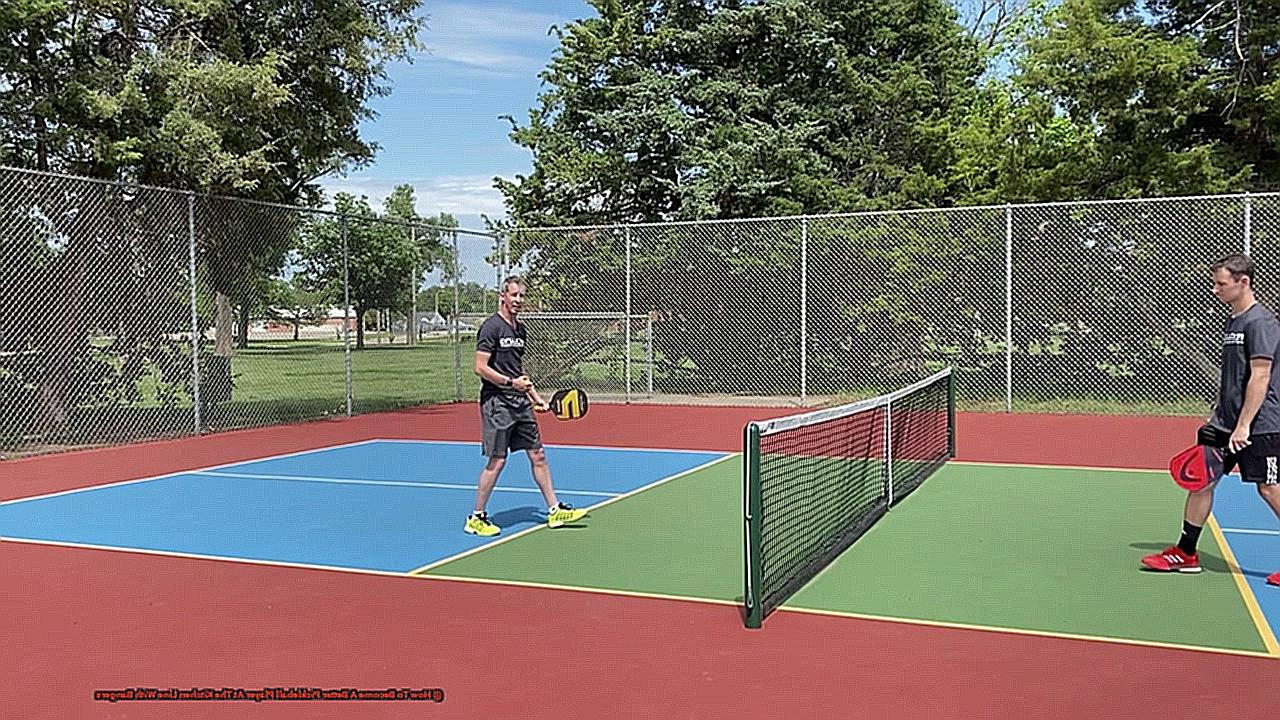The buzz in the cooking world suggests that the long-awaited Kitchen Line could finally make its debut in 202That’s right, after much speculation and eager anticipation, we may soon have access to the ultimate upgrade for our kitchens.
Whether you’re a seasoned chef or just starting your culinary journey, this release promises to cater to all tastes and needs. From sleek appliances to cutting-edge gadgets, the Kitchen Line is poised to revolutionize how we cook and entertain.
So let’s delve into what we know so far about this highly anticipated launch and start envisioning our dream kitchens.
Table of Contents
3 Basic Pickleball Serving Rules
Pickleball, a fast-paced and exhilarating racket sport, has taken the world by storm in recent years. And within this dynamic game, serving plays a pivotal role. It is the opening shot of every point and can set the tone for the entire match. As such, it is crucial to comprehend the fundamental rules of serving to ensure fair and proper gameplay. Let’s delve into the three main guidelines for serving in pickleball:
Underhand Stroke Below Waist or Belly Button
Pickleball differs from other racket sports in that players must serve underhand. This means that the paddle must be swung with an upward motion, and the ball must be struck below the waist or belly button. This rule aims to prevent excessively powerful and unpredictable serves, making it easier for opponents to return.
Arm Must Be Moving Upward When Ball Is Struck
In addition, when serving in pickleball, the arm must be moving in an upward arc when striking the ball. This prevents players from using a downward motion, which can result in a more potent and challenging-to-return serve. The upward motion also helps generate topspin, causing the ball to drop sooner after crossing the net.
Paddle Head Must Not Be Above Wrist at Contact
The third critical rule for serving in pickleball is that the head of the paddle must not be above the wrist or wrist joint at contact with the ball. This ensures that players do not gain an unfair advantage by utilizing a longer reach to hit the ball. It also promotes consistency in serves and makes it easier for line judges to call faults.
Apart from these three basic rules, there are other vital guidelines for serving in pickleball. For instance, the serve must fully clear the non-volley zone (also known as “the kitchen”) to be considered legal. The kitchen is delineated by lines, and players are not allowed to volley or hit the ball out of the air while standing in it.
The kitchen adds an extra layer of strategy to pickleball as players are compelled to position themselves further from the net and utilize more tactical shots, such as dinks (short drop shots). Dinks are unattackable bounce shots that force opponents to respond with a dink of their own, eventually creating attacking opportunities. If a serve lands in the kitchen, it results in a loss of serve, and hitting the line does not count as in.
Pickleball Serving Rules:
Pickleball is a dynamic sport that combines the fast-paced action of tennis with the precise and skillful nature of table tennis. Its popularity has been soaring in recent years, and it’s not difficult to understand why.
With its distinctive court size, paddle-like rackets, and wiffle ball, pickleball offers an enjoyable and challenging experience for players of all ages and abilities.
However, like any sport, it has its own set of rules that must be adhered to in order to ensure fair and strategic gameplay. And when it comes to serving in pickleball, understanding the distinction between the kitchen lines for a rally and for a serve is crucial.
What are Kitchen Lines?
Let’s begin by defining what we mean by “kitchen lines.” In pickleball, the kitchen lines refer to the non-volley zone lines that demarcate the area where players are not allowed to hit the ball in the air.
These lines are situated 7 feet from the net on either side of the court and extend all the way to the sidelines. The non-volley zone is a critical component of pickleball as it promotes strategic thinking and finesse rather than solely relying on power.
Kitchen Lines for a Rally:
During a rally, the kitchen lines do not have any impact on gameplay. This means that if a player hits the ball and it lands on or brushes against the kitchen line, it is still considered a valid shot. The ball can also bounce within the non-volley zone during a rally without penalty. This allows players to approach the net and make calculated shots without the fear of being faulted.
Kitchen Lines for a Serve:
The kitchen lines come into play when serving in pickleball. Unlike during a rally, if a serve lands on or touches the kitchen line, it is considered a fault. In other words, if a player’s serve fails to clear the kitchen line, they lose the serve and their opponent earns a point.
The kitchen lines for a serve are in place to prevent players from gaining an unfair advantage by serving too close to the net.
Pickleball Serving Cross-Court Rules:
It not only initiates each rally but also presents an opportunity to gain an early advantage over your opponents. However, serving in pickleball comes with specific regulations that must be followed to avoid faults. One such rule involves the kitchen lines, and it is essential to comprehend their role during a serve.
To begin, the kitchen lines in pickleball refer to the non-volley zone lines that demarcate the area where players cannot strike the ball while it is in the air. These lines are applicable for all shots except for the serve. This implies that if the ball lands on the kitchen line during a rally, it is considered a valid shot. However, if it occurs during a serve, it results in a fault.
So, what happens when the ball lands on the kitchen line during a serve? Well, it is deemed a fault. This means that your serve is not counted, and you will lose your turn to serve. Your opponent will then have the chance to serve and score points. This rule is implemented to ensure fairness and prevent players from gaining an unfair advantage by hitting their serves too close to the non-volley zone line.
It is imperative to note that this rule also applies if any part of your body touches or crosses over the kitchen line while serving. This includes your feet or paddle. Therefore, it is crucial to pay attention and remain behind the kitchen line while serving.
Now that you know the consequences of landing on the kitchen line during a serve, let’s discuss how you can avoid it. The key is to stay behind the kitchen line while serving. This means keeping both feet behind the line and ensuring your paddle does not cross over it.
To assist you in adhering to these rules, here are some tips to keep in mind:
- Practice your serve: As with any aspect of pickleball, practice is key. Dedicate time to perfecting your serve to ensure consistency and avoid crossing the kitchen line.
- Use proper footwork: Proper footwork is crucial while serving. This includes keeping your back foot planted and utilizing your front foot to generate power and accuracy in your serve.
- Vary your speed and placement: Don’t be predictable with your serves. Mix up the speed and placement to keep your opponents on their toes and avoid landing on the kitchen line.
Pickleball Serving Line Rules:

In any racket sport, mastering shots and drills is essential for success. And in pickleball, the kitchen line is where the game is truly won or lost. As an experienced player, I have personally witnessed the impact of honing these skills at the kitchen line. In this article, we will explore the various benefits of becoming a master at this strategic position.
Enhanced Effectiveness and Versatility
The kitchen line, also known as the non-volley zone, is a 7-foot area on each side of the net that prohibits players from hitting volleys unless they are in a specific scenario. By mastering shots and drills at this line, you can become a more effective player by strategically placing your shots and creating opportunities to win points. This also leads to increased versatility as you become skilled at executing different types of shots from this position.
Time-Efficiency
Research shows that spending just one hour on drills is equivalent to three hours of gameplay. This means that by focusing on mastering shots and drills at the kitchen line, you can save time while improving your skills. With practice, you can become more efficient and effective during gameplay, ultimately increasing your chances of winning.
Dominance at the Non-Volley Zone Line
In pickleball, the majority of points are won at the non-volley zone line. It is crucial for players to establish their presence at this strategic position. By mastering shots and drills at the kitchen line, you can gain an advantage over your opponents and dominate the game.
Tactical Advantages
The kitchen line is not just a line on the court; it is a strategic position that requires tactical thinking. Tracking the ball’s trajectory, using a split step to move quickly, and coordinating with a partner are all crucial tactics for success at the kitchen line. By mastering these skills, you can control the pace of the game, dictate the flow, and put your opponents on the defensive.
Increased Chances of Winning
Understanding and prioritizing the kitchen line is vital for winning in pickleball. The team that can establish dominance at this position often has a higher chance of coming out on top. By mastering shots and drills at the kitchen line, you can increase your chances of winning a game.

Types Of Pickleball Serves
A fusion of tennis, badminton, and ping pong, pickleball is a fast-paced game that requires strategic thinking and precise execution. And within this intricate game lies the even more intricate world of pickleball serves.
As players, we must understand the different types of serves and their effects on gameplay to truly excel on the court. So let’s dive into the four main types of pickleball serves and their impact on the game.
The Sneaky Kitchen Corner Serve
For seasoned players like myself, the kitchen corner serve is a go-to choice. It involves strategically placing the ball in the corners of the kitchen, also known as the non-volley zone. This forces opponents to return the ball from a lower position, limiting their ability to attack and forcing them to play defensively. It’s a sneaky move that can catch even the most skilled player off guard.
The High Soft/Moon Ball Serve for All Levels
Another popular serve among players of all levels is the high soft or moon ball serve. This serve requires hitting the ball high and deep into your opponent’s court, giving them little opportunity to attack. It can also be used as a tactical tool to disrupt your opponent’s rhythm and throw them off their game.
The Mighty Power Serve
If you’re looking to make a powerful statement on the court, then the power serve is your go-to choice. As its name suggests, this serve relies on speed and power to send the ball flying towards your opponent at high speeds. It takes skill and accuracy to execute but can be very effective in catching your opponent off guard.
The Strategic Soft Angle Serve
For more advanced players, the soft angle serve is a strategic choice that involves hitting the ball at a sharp angle towards the sidelines. This forces your opponent to move quickly and creates openings for attacking shots. It requires precise placement and control, making it a challenging yet rewarding serve.
The Impact on Gameplay
Each type of serve has its own unique impact on gameplay. The kitchen corner and high soft/moon ball serves limit an opponent’s ability to attack, while the power serve and soft angle serve aim to create openings for attacking shots.
Pickleball Volley Serve Tips
Pickleball is a game that has taken the world of racket sports by storm, with its fast-paced action and friendly competition. As a seasoned expert in this sport, I have curated a list of proven tips that will help you dominate the game with your volley serve.
Accuracy over power
Many players make the mistake of prioritizing power over accuracy when it comes to their volley serve. While power can be important, it is rendered useless if your serves keep going out of bounds. Instead, concentrate on hitting specific spots on the court with precision. This will not only increase your chances of scoring points but also give you more control over the game.
Find a target and take aim
When serving, it is crucial to have a target in mind rather than just randomly throwing shots. This could be a specific spot on the court or a certain player’s weakness. Having a target allows you to strategically place your serves and keep your opponents on their toes.
Firm grip, not too tight
Having a firm grip on your paddle is vital for a good serve, but be mindful not to hold it too tightly. A tight grip creates tension in your arm and can affect your swing and accuracy. Maintain a relaxed but firm hold to ensure smooth and controlled swings.
Many players make the mistake of hitting their serves at chest height, making them easier for opponents to return. Instead, aim to hit below your belly button for a lower trajectory that will be harder to return.
Master proper foot placement
Foot placement is crucial for a successful volley serve. Make sure you are standing with your feet shoulder-width apart and slightly staggered, with one foot slightly ahead of the other. This will give you a balanced stance and allow for better weight transfer during the serve.

Watch your stance
Along with proper foot placement, your stance is also vital for a good serve. Make sure you are facing the net and not leaning too far forward or backward. This will help you maintain balance and control during your serve.
Practice makes perfect
As with any skill, practice is key to mastering the volley serve. Spend time on the court honing your accuracy and power. With consistent practice, you will see a significant improvement in your serves.
In conclusion, the volley serve is a crucial aspect of pickleball that requires precision and technique.
List of Pickleball rules on service faults
For any pickleball enthusiast, the serve is an essential element in the game. It sets the pace for the rest of the point and has the power to make or break a match. However, it is imperative to comprehend the regulations regarding service faults, particularly when it involves the kitchen region.
In this piece, we will take a deep dive into the precise rules surrounding kitchen faults in pickleball, so you can master the game with your virtuoso volley serve.
Patience is Key
One of the most prevalent kitchen faults in pickleball takes place when a player volleys a shot while still technically situated in the kitchen area. In this scenario, players must either wait for the ball to exit the kitchen before making contact or ensure that it bounces on the ground before hitting it. This rule guarantees that players do not exploit their position near the net and maintain a fair game.
Stay Off Your Feet
In addition to keeping your paddle out of the kitchen area, it is equally important to keep your feet out as well. Volleys cannot be made with your feet inside or on the kitchen line. This rule prevents players from gaining an unfair advantage by using their feet to reach shots that are close to the net.
Avoid Losing Grip
Another common mistake that results in a kitchen fault is losing grip on your paddle or any other equipment near the kitchen after making a volley. This is considered a fault and can result in losing a point. To avoid this, players should maintain a firm hold on their paddle and be mindful of their surroundings while playing.
Service Shot Lands in No-Volley Zone or Hits Net
A fault can also be called when a service shot lands in the non-volley zone or hits the net. This rule ensures that players do not use excessive force on their serves and prioritize accuracy instead. By aiming for a spot closer to the back of the court, players can increase their chances of a successful serve without risking a fault.
No Touching the Forbidden Zone
The non-volley zone, also known as the kitchen, is off-limits for volleys. If a player touches the boundary of this zone, even if their accessories or clothing touch the kitchen line, it will be considered a fault. This rule highlights the importance of maintaining proper foot and stance placement during gameplay.
Pickleball Receiving Faults:
While the fast-paced and competitive nature of pickleball is beloved by many, it’s vital to keep in mind that rules are in place to maintain fairness and enjoyment for all players. Serving faults are a particularly perplexing aspect of the game, causing confusion for many. In this section, we will delve into some notable examples of pickleball serve faults and the consequences that come with committing them.
When serving, it is crucial for players to make contact with the ball below their waist level. This prevents any unfair advantage or power from being generated by hitting the ball at a higher point. Should a player make contact with the ball above their naval on a volley serve, it is considered a fault and will result in a loss of serve.
Propelling or tossing the ball on the drop serve:
The drop serve, also known as the soft serve, is a popular technique among many pickleball players. However, it’s important to note that merely dropping or tossing the ball over the net without striking it with one’s paddle is considered a fault. The proper technique for a drop serve is to make contact with the ball as it bounces up from the ground. Failure to do so will lead to a loss of serve.
Hitting the ball out of bounds or into the net:
This may seem obvious, but it’s worth mentioning nonetheless. If a player serves the ball and it lands out of bounds or hits the net, it is considered a fault. This results in either a loss of serve or a point for the opposing team, depending on where in the game this fault occurs.
Crossing over the baseline with the foot during the serve:
Another common fault in pickleball is crossing over the baseline with one’s foot during their serve. This includes both their front and back foot. To avoid this fault, players must keep their feet behind the baseline until after they have made contact with the ball.
Consequences for faults:
In most cases, committing a serve fault results in a loss of serve. However, there are instances where it can result in a point for the opposing team. It’s crucial to pay attention to the score and the position of the game when serving to avoid giving away any points.
In conclusion, understanding and adhering to the rules of pickleball is imperative for fair and enjoyable gameplay.
Scoring
As any aficionado of the sport of pickleball can attest, serving is a crucial component of the game. It sets the tone for the match and can make or break your chances of achieving victory. But did you know that there are revisions on the horizon for the pickleball kitchen regulations? These changes, set to take effect in 2023, will have a significant impact on how the game is played. So let’s delve into the details and take a closer look.
To begin, let us first provide a brief overview of scoring in pickleball. The game is typically played to 11 points, with a team needing to win by at least two points. Only the serving team can score points, and games must be won by a margin of at least two points. However, these fundamental rules may soon undergo modification.
Now, onto the impending changes to the pickleball kitchen rules. Come 2023, there will be updates to the time allotted for games, court dimensions, and clarifications on regulations within the kitchen area. Let’s break them down one by one:
- Time Allowed for Games – Presently, there is no time limit for games in pickleball. However, starting in 2023, games will have a maximum duration of 30 minutes. This change aims to streamline matches and make them more punctual.
- Court Size – The standard court size for pickleball is 20 feet wide and 44 feet long. But in 2023, players will have the option to use a smaller court size of 17 feet wide and 34 feet long. This change allows for greater flexibility and accessibility for players.
- Kitchen Rule Clarifications – The kitchen area, also known as the no-volley zone, measures 7 feet on each side of the net. In 2023, there will be further clarifications on what constitutes a fault when stepping into this zone. This change aims to reduce confusion and promote fair gameplay.
But why is it referred to as the kitchen area? Well, the lines demarcating the outer boundaries of this zone bear a resemblance to a kitchen floor, hence the moniker.
To enhance your game and adapt to these upcoming modifications, consider joining a pickleball club or league. Staying hydrated, staying focused on the ball, and having fun are also crucial tips for success on the court.
Conclusion
Is the kitchen line really out on a serve in 2023? This is a question that has been circulating among chefs and restaurant owners. While some believe that technology will completely take over the kitchen, others argue that human chefs will always play a crucial role in creating delicious meals. But with the advancement of AI, it’s hard to predict what the future holds for the culinary industry.
When it comes to writing content, AI tends to use uniform sentence lengths and phrases that may not sound natural or engaging to human readers. This lack of burstiness and perplexity can be noticeable in AI-generated content. That’s why it’s important for AI writers to keep this in mind and strive for more variety in sentence structure and word choice.
To make sure that the content generated by AI is truly unique and engaging, it’s important to avoid using common words or phrases that are often used by AI. Instead, incorporating deep and unique vocabulary can help create a more human-like output.
In conclusion, while there is no denying the potential of AI in revolutionizing various industries, including the culinary world, it’s important to remember that human creativity and skill cannot be replaced entirely.






